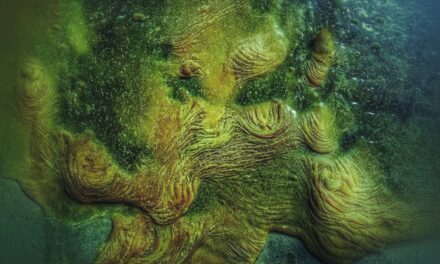Nicolas Lancret was born in 1690 in Paris, a city that was not only the heart of France but also a vibrant hub of artistic innovation during the early 18th century. Growing up in a milieu rich with cultural influences, Lancret was exposed to the arts from a young age. His family background remains somewhat obscure, but it is believed that he received his initial artistic training in the workshops of established painters.
This early exposure to the techniques and styles of his predecessors would later inform his own artistic development. Lancret’s formal education in the arts likely included studies at the Académie Royale de Peinture et de Sculpture, where he would have encountered the prevailing artistic doctrines of the time. The Académie was instrumental in shaping the careers of many artists, providing them with a structured environment to hone their skills.
It was here that Lancret would have been introduced to the classical ideals that dominated French art, as well as the emerging Rococo style that would come to define his work.
Summary
- Nicolas Lancret was born in Paris in 1690 and received his artistic training at the Académie de Saint-Luc.
- Lancret was heavily influenced by the work of Antoine Watteau and developed a style known for its delicate brushwork and playful, theatrical compositions.
- Some of Lancret’s notable works include “The Four Times of Day” series and “The Swing,” which often depicted scenes of elegant leisure and romantic dalliance.
- Lancret was a prominent figure in the Rococo movement, known for his depictions of aristocratic life and his ability to capture the fleeting moments of pleasure and frivolity.
- Lancret’s connections to the French court and his patronage by influential figures such as Madame de Pompadour helped to elevate his status and secure his place in the art world.
Influences and Style
Influence of Antoine Watteau
One of the most significant influences was the work of Antoine Watteau, whose emphasis on lightness, grace, and the depiction of leisure activities resonated deeply with Lancret. Watteau’s ability to capture fleeting moments of beauty and emotion inspired Lancret to explore similar themes in his own paintings.
Development of Lancret’s Style
The use of soft colours and delicate brushwork became hallmarks of Lancret’s style, allowing him to convey a sense of intimacy and charm. In addition to Watteau, Lancret was also influenced by the broader cultural shifts occurring in France during his lifetime.
The Rococo Movement and Its Impact
The Rococo movement emerged as a reaction against the grandeur and formality of Baroque art, favouring instead a more playful and decorative approach. This shift allowed Lancret to experiment with themes of love, romance, and everyday life, often set against idyllic landscapes or opulent interiors. His works are characterised by their light-heartedness and an emphasis on sensuality, which became defining features of his artistic identity.
Notable Works and Themes
Lancret’s oeuvre is marked by a number of notable works that exemplify his mastery of the Rococo style. One such painting is “The Dance,” which captures a moment of joyous celebration among elegantly dressed figures in a lush garden setting. The composition is dynamic, with swirling movements and vibrant colours that evoke a sense of spontaneity and delight.
This work encapsulates Lancret’s ability to portray social interactions with a sense of warmth and intimacy, inviting viewers into the world he created. Another significant piece is “The Toilette,” which showcases Lancret’s fascination with themes of beauty and femininity. In this painting, a group of women is depicted engaged in the ritual of preparing for an outing, surrounded by luxurious fabrics and delicate accessories.
The attention to detail in the clothing and the expressions of the figures highlights Lancret’s skill in capturing both the physical beauty and the emotional nuances of his subjects. Through these works, Lancret explored themes of love, leisure, and the pleasures of life, reflecting the values and aspirations of the French aristocracy during his time.
Lancret’s Place in the Rococo Movement
Nicolas Lancret occupies a significant position within the Rococo movement, often regarded as one of its key figures alongside artists like Watteau and François Boucher. While Watteau is celebrated for his pioneering contributions to the genre of fête galante, Lancret carved out his own niche by focusing on domestic scenes and intimate portrayals of social life. His ability to blend elegance with a sense of playfulness made him a favourite among patrons seeking art that reflected their lifestyles.
Lancret’s work embodies the essence of Rococo art—an emphasis on decorative beauty, lightness, and an exploration of human emotions. His paintings often feature idyllic settings filled with charming figures engaged in leisurely activities, capturing the spirit of an era that valued pleasure and aesthetic enjoyment. As such, Lancret’s contributions helped to solidify Rococo as a distinct artistic movement that celebrated both beauty and the complexities of human relationships.
Patronage and Royal Connections
Throughout his career, Lancret enjoyed patronage from various members of the French aristocracy, which played a crucial role in his artistic development. His connections with influential patrons allowed him to secure commissions for private collections and public displays alike. Notably, he garnered attention from members of the royal court, including King Louis XV, who appreciated the light-heartedness and elegance that characterised Lancret’s work.
The support from such high-profile patrons not only provided financial stability for Lancret but also elevated his status within the art world. Commissions from aristocratic clients often dictated artistic trends, and Lancret’s ability to cater to their tastes ensured his continued relevance in a competitive market. This relationship between artist and patron exemplifies how art during this period was often intertwined with social status and power dynamics.
Lancret’s Impact on the Art World
Lancret’s impact on the art world extends beyond his immediate contributions to Rococo painting; he also influenced subsequent generations of artists who sought to emulate his style or draw inspiration from his themes. His focus on intimate domestic scenes paved the way for later artists to explore similar subjects, allowing for a broader interpretation of everyday life within art. This shift towards more personal narratives can be seen in the works of later painters who embraced realism and impressionism.
Moreover, Lancret’s ability to capture human emotion through subtle gestures and expressions set a precedent for artists who followed him. His works often convey a sense of narrative depth that invites viewers to engage with the characters depicted. This emphasis on storytelling within visual art has had lasting implications for how artists approach their subjects, encouraging them to explore emotional resonance alongside aesthetic beauty.
Legacy and Influence on Later Artists
The legacy of Nicolas Lancret is evident in the works of numerous artists who came after him. His influence can be traced through various movements, including Romanticism and Impressionism, where themes of intimacy and emotional expression became increasingly prominent. Artists such as Jean-Auguste-Dominique Ingres and Édouard Manet drew upon elements of Lancret’s style while infusing their own interpretations into their works.
Furthermore, Lancret’s exploration of feminine beauty and domestic life resonated with later feminist artists who sought to challenge traditional representations of women in art. His ability to portray women as active participants in their own narratives laid groundwork for future explorations of gender dynamics within visual culture. As such, Lancret’s contributions continue to inspire contemporary artists who grapple with similar themes in their own practices.
Techniques and Materials Used by Lancret
Lancret employed a variety of techniques and materials that were characteristic of Rococo painting. He primarily worked with oil paints on canvas, allowing him to achieve rich colours and intricate details that defined his style. His brushwork is notable for its fluidity; he often used soft strokes to create delicate textures that enhanced the overall luminosity of his compositions.
In addition to traditional oil painting techniques, Lancret also experimented with colour palettes that reflected the light-hearted nature of his subjects. Pastel hues became a signature element in many of his works, contributing to an ethereal quality that invites viewers into his idyllic scenes. The careful layering of paint allowed him to build depth and dimension within his compositions, showcasing his technical prowess as an artist.
Critical Reception and Controversies
Lancret’s work received mixed critical reception during his lifetime, reflecting the evolving tastes within the art world. While many patrons admired his ability to capture beauty and charm, some critics dismissed his work as overly decorative or lacking in intellectual depth compared to more serious artistic pursuits. This tension between aesthetic pleasure and intellectual rigor was a recurring theme in discussions surrounding Rococo art.
Controversies also arose regarding Lancret’s depictions of women and themes related to sensuality. Some critics argued that his portrayal of female figures perpetuated stereotypes or objectified women within a male-dominated society. However, others defended his work as an exploration of femininity that celebrated women’s agency within their social contexts.
This ongoing debate highlights how art can serve as both a reflection of societal values and a catalyst for challenging those very norms.
Lancret’s Personal Life and Relationships
Details about Lancret’s personal life remain somewhat elusive; however, it is known that he maintained relationships with various artists and intellectuals within Parisian society. These connections likely influenced both his artistic practice and thematic choices throughout his career. The camaraderie among artists during this period fostered an environment where ideas could be exchanged freely, contributing to the evolution of styles and techniques.
Lancret’s relationships with patrons also played a significant role in shaping his career trajectory. The support he received from influential figures not only provided financial backing but also facilitated opportunities for collaboration and exposure within elite circles. These connections underscored the importance of social networks in navigating the competitive landscape of 18th-century art.
The Rediscovery of Lancret’s Work
In recent years, there has been a renewed interest in Nicolas Lancret’s work as scholars and collectors seek to reassess his contributions to art history. Exhibitions showcasing Rococo art have highlighted Lancret alongside other prominent figures, allowing contemporary audiences to engage with his oeuvre anew. This rediscovery has prompted discussions about his significance within the broader context of 18th-century French art.
The resurgence of interest in Lancret’s work also reflects a growing appreciation for lesser-known artists who played vital roles in shaping artistic movements. As museums and galleries continue to curate exhibitions that celebrate diverse voices within art history, Lancret’s legacy is being re-evaluated through fresh perspectives that acknowledge both his technical skill and thematic explorations. This renewed focus ensures that Lancret’s contributions will not be forgotten but rather celebrated as integral components of the Rococo movement’s rich tapestry.
For those interested in exploring different artistic techniques, a related article worth checking out is “Mixed Media Portraits: Layering Paint, Paper, and Text” on Think of Art. This article delves into the process of creating mixed media portraits using various materials and textures to add depth and complexity to the artwork. It offers valuable insights and tips for artists looking to experiment with different mediums in their work. Click here to read more.


